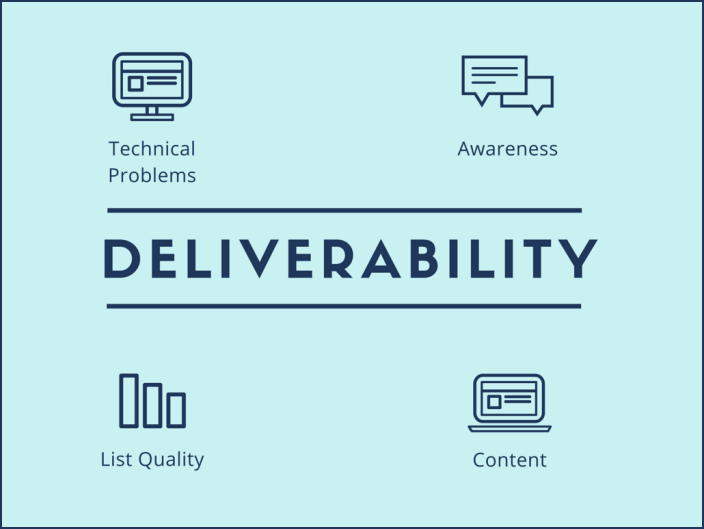Email Marketing: What are some of the biggest deliverability challenges?
Deliverability should be a concern for any email marketer. If you can’t get into the inbox, your email send might as well not have even happened.
Deliverability can be a challenge. A bad reputation score can significantly impact your ability to reach the inbox. An ESP (email service provider) with other clients behaving poorly on a shared IP also hurts you. Getting off of a spam or junk mail blacklist can be a Kafka-esque experience of not really being sure who or what will get you off that list.
To help you with deliverability issues, I reached out to three industry experts to find out what they considered to be the biggest deliverability challenges facing marketers today.
Understand why you have a deliverability problem
Tom Sather, Senior Director of Research, Return Path, said, “The biggest challenge that marketers have today is gaining awareness and understanding why they’re having a problem. Email providers like Gmail and Yahoo!, as well as spam filters, make real-time, data-driven decisions based on their users’ behaviors and actions.”
He said understanding the data behind your email program is going to do more towards solving a deliverability issue than following any list of tips or best practices.
Tom explained, “Most email marketers lack this fundamental data that the email providers have access to and are essentially in the dark ages when it comes to finding a solution. As a result, we hear experts touting general best practices — which is more like alchemy and doesn’t provide the desired results or can make the situation worse. Marketers who have access[to] and analyze the data will see the highest inbox placement rates and happier and more engaged subscribers as a result.”









